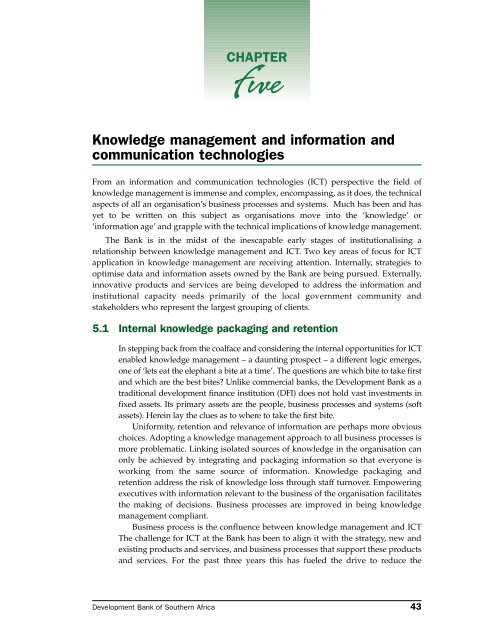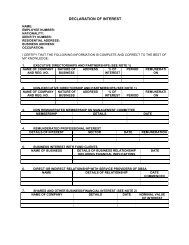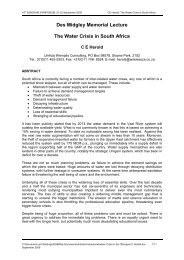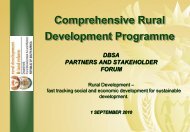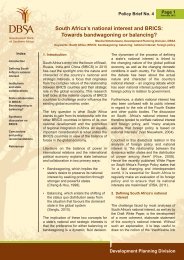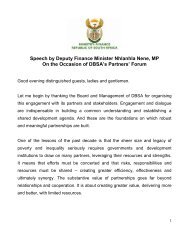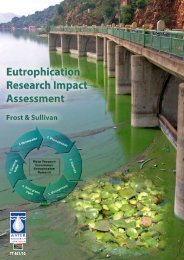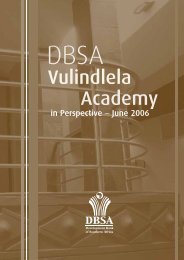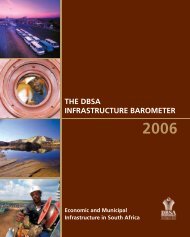A Knowledge Strategy
A Knowledge Strategy
A Knowledge Strategy
You also want an ePaper? Increase the reach of your titles
YUMPU automatically turns print PDFs into web optimized ePapers that Google loves.
CHAPTER<br />
Five<br />
<strong>Knowledge</strong> management and information and<br />
communication technologies<br />
From an information and communication technologies (ICT) perspective the field of<br />
knowledge management is immense and complex, encompassing, as it does, the technical<br />
aspects of all an organisation’s business processes and systems. Much has been and has<br />
yet to be written on this subject as organisations move into the ‘knowledge’ or<br />
‘information age’ and grapple with the technical implications of knowledge management.<br />
The Bank is in the midst of the inescapable early stages of institutionalising a<br />
relationship between knowledge management and ICT. Two key areas of focus for ICT<br />
application in knowledge management are receiving attention. Internally, strategies to<br />
optimise data and information assets owned by the Bank are being pursued. Externally,<br />
innovative products and services are being developed to address the information and<br />
institutional capacity needs primarily of the local government community and<br />
stakeholders who represent the largest grouping of clients.<br />
5.1 Internal knowledge packaging and retention<br />
In stepping back from the coalface and considering the internal opportunities for ICT<br />
enabled knowledge management – a daunting prospect – a different logic emerges,<br />
one of ‘lets eat the elephant a bite at a time’. The questions are which bite to take first<br />
and which are the best bites? Unlike commercial banks, the Development Bank as a<br />
traditional development finance institution (DFI) does not hold vast investments in<br />
fixed assets. Its primary assets are the people, business processes and systems (soft<br />
assets). Herein lay the clues as to where to take the first bite.<br />
Uniformity, retention and relevance of information are perhaps more obvious<br />
choices. Adopting a knowledge management approach to all business processes is<br />
more problematic. Linking isolated sources of knowledge in the organisation can<br />
only be achieved by integrating and packaging information so that everyone is<br />
working from the same source of information. <strong>Knowledge</strong> packaging and<br />
retention address the risk of knowledge loss through staff turnover. Empowering<br />
executives with information relevant to the business of the organisation facilitates<br />
the making of decisions. Business processes are improved in being knowledge<br />
management compliant.<br />
Business process is the confluence between knowledge management and ICT<br />
The challenge for ICT at the Bank has been to align it with the strategy, new and<br />
existing products and services, and business processes that support these products<br />
and services. For the past three years this has fueled the drive to reduce the<br />
Development Bank of Southern Africa 43


